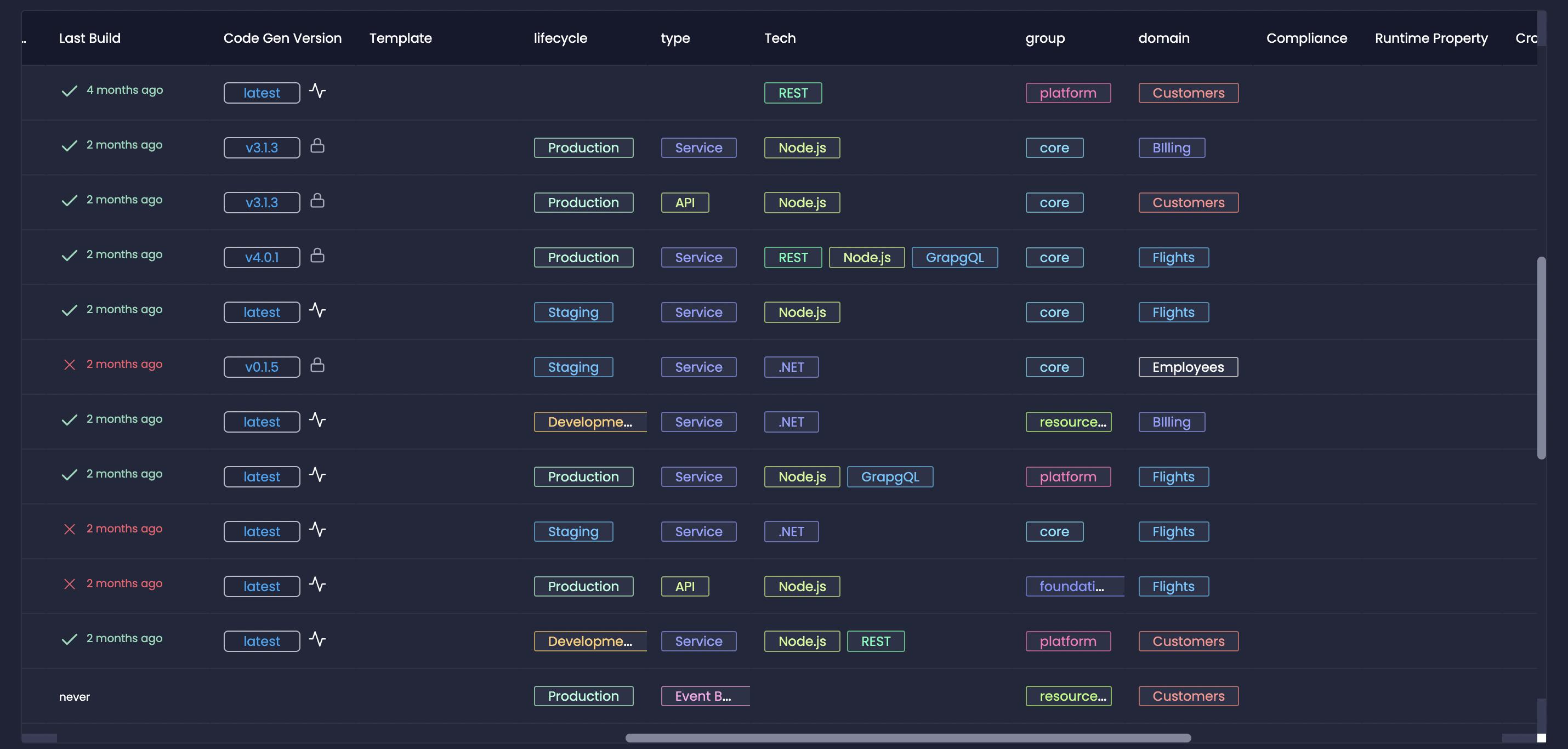
Why Resource Management Matters
As a platform team, you need to ensure that every new or existing resource in your software ecosystem follows your organization’s best practices, security requirements, and architectural standards. This presents several challenges:- Lack of Centralized Visibility: It’s challenging to get a unified view of all your services and resources, making it difficult to enforce standards and track compliance.
- Difficulty in Understanding Resource Relationships: Without consistent tagging, understanding the relationships and dependencies between various components can be complex and time-consuming.
- Inconsistent Resource Definitions: Variations in how resources are described can lead to confusion, hindering effective management and updates.
- Limited Ability to Enforce Standards: Without a structured way to categorize resources, enforcing architectural and security standards across the organization becomes difficult.
How Catalog Properties Help
Catalog Properties directly address these challenges by letting you establish a common language for describing and managing all resources in your Amplication workspace. They let you:Establish Strategic Control
Define & enforce organizational standards at scale. Tag each resource with properties that reflect your unique requirements, like domain, environment, or regulatory compliance tier.
Simplify Maintenance & Reduce Drift
Keep resources aligned by leveraging Catalog Properties in automated updates, so you can mitigate technical debt and ensure ongoing compliance.
Accelerate Developer Velocity
Free your dev teams from boilerplate and guesswork. Standardize logic and configurations in code generation, allowing developers to focus on critical business logic.
Enhance Visibility & Governance
Quickly filter, group, and visualize resources in the Service Catalog or the Architecture Graph. Gain insights into how resources are deployed, owned, or integrated.
Catalog vs. Blueprint PropertiesBlueprint Properties define the configuration of a specific resource.
Catalog properties, on the other hand, are organizational metadata that apply broadly across all resources for filtering, grouping, governance, and more.
Smart Code Generation with Catalog Properties
Catalog Properties aren’t just for organizing your resources. They also connect into code generation via plugins. When you generate code using Private Plugins, you have full access to:- Catalog Properties of the specific resource
- Blueprint Properties of the resource
- Catalog & Blueprint Properties of all related resources set through Blueprint relations
- Compliance Level triggers the inclusion of stricter security modules
- Deployment Environment adjusts Docker files, Helm charts, or serverless config
- Team Ownership adds certain logging or monitoring integrations relevant for that team
How Catalog Properties Work
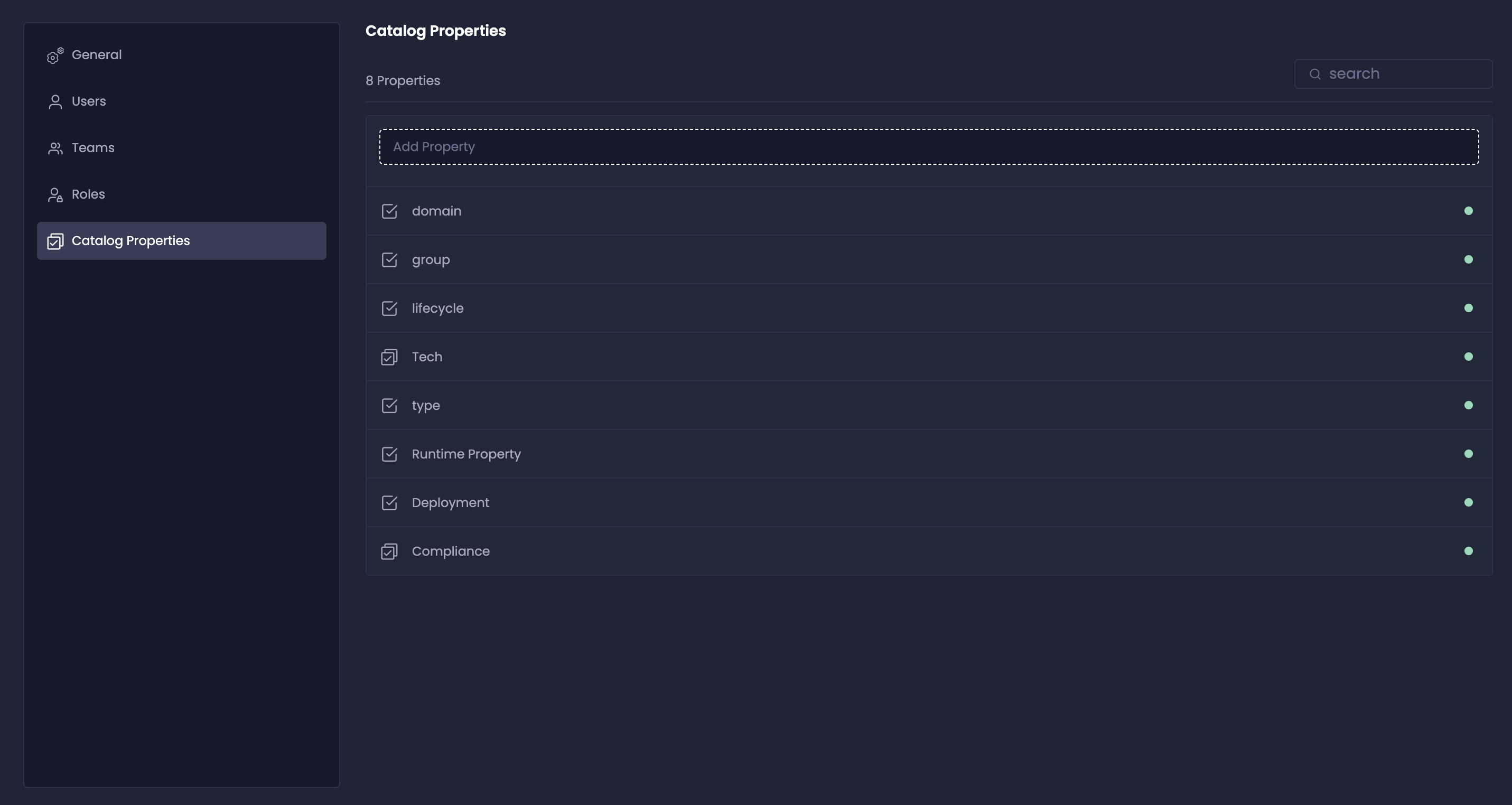
- Select: Allows you to choose one option from a predefined list
- Multi-Select: Enables you to select multiple options from a predefined list
- Text: Allows you to enter free-form text. You can also add a regular expression to validate the input and provide a custom validation message
- Link: Allows you to enter a URL. Similar to the Text type, you can validate the URL format using a regular expression and provide a custom validation message
Example Use Cases
Domain Organization
Keep services organized by business domain, enabling quick filtering and grouping in both the Service Catalog and Architecture Graph.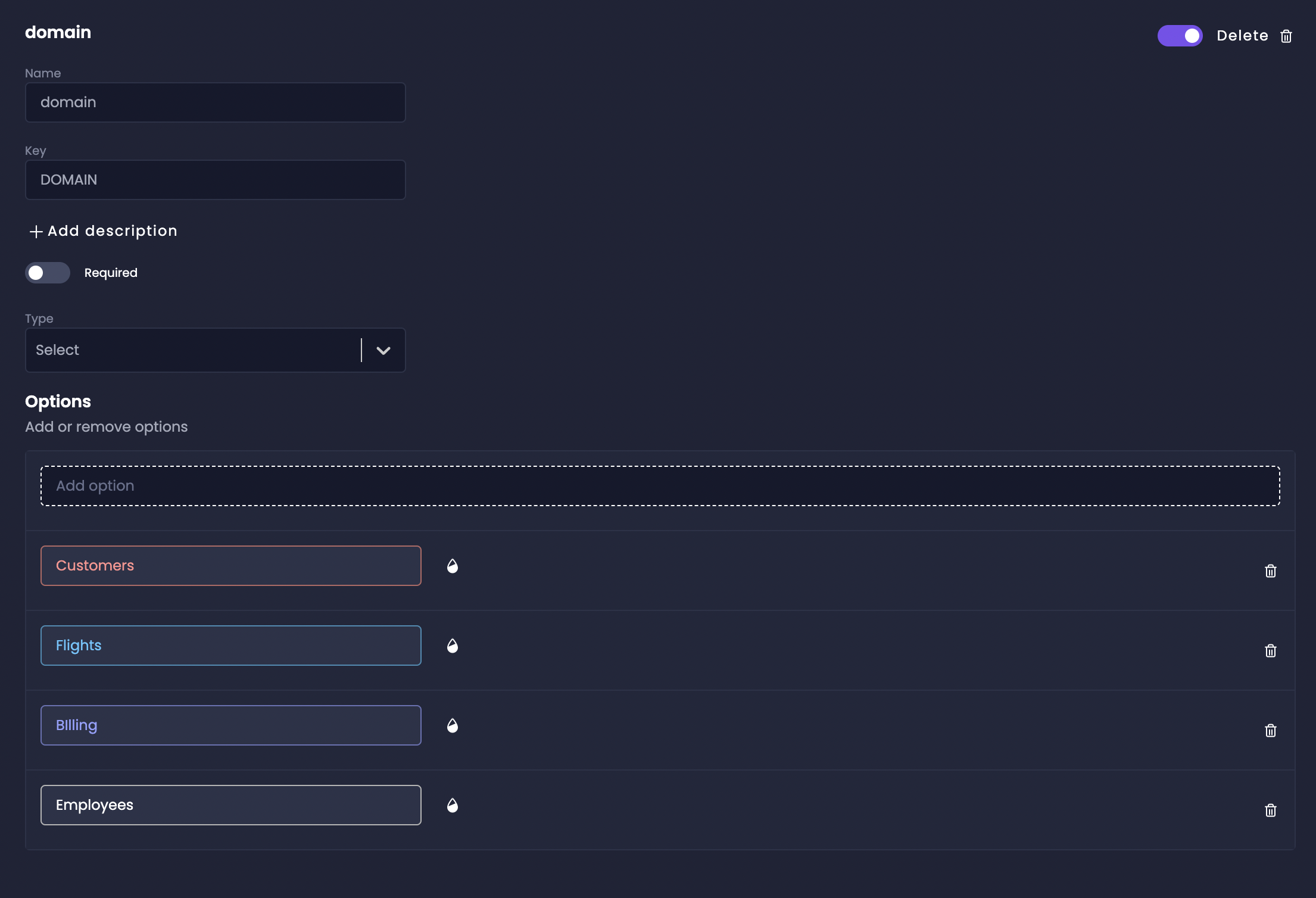

Monitored Regions
Specify the geographic regions where a service is actively monitored for performance and compliance, allowing for comprehensive oversight across your infrastructure.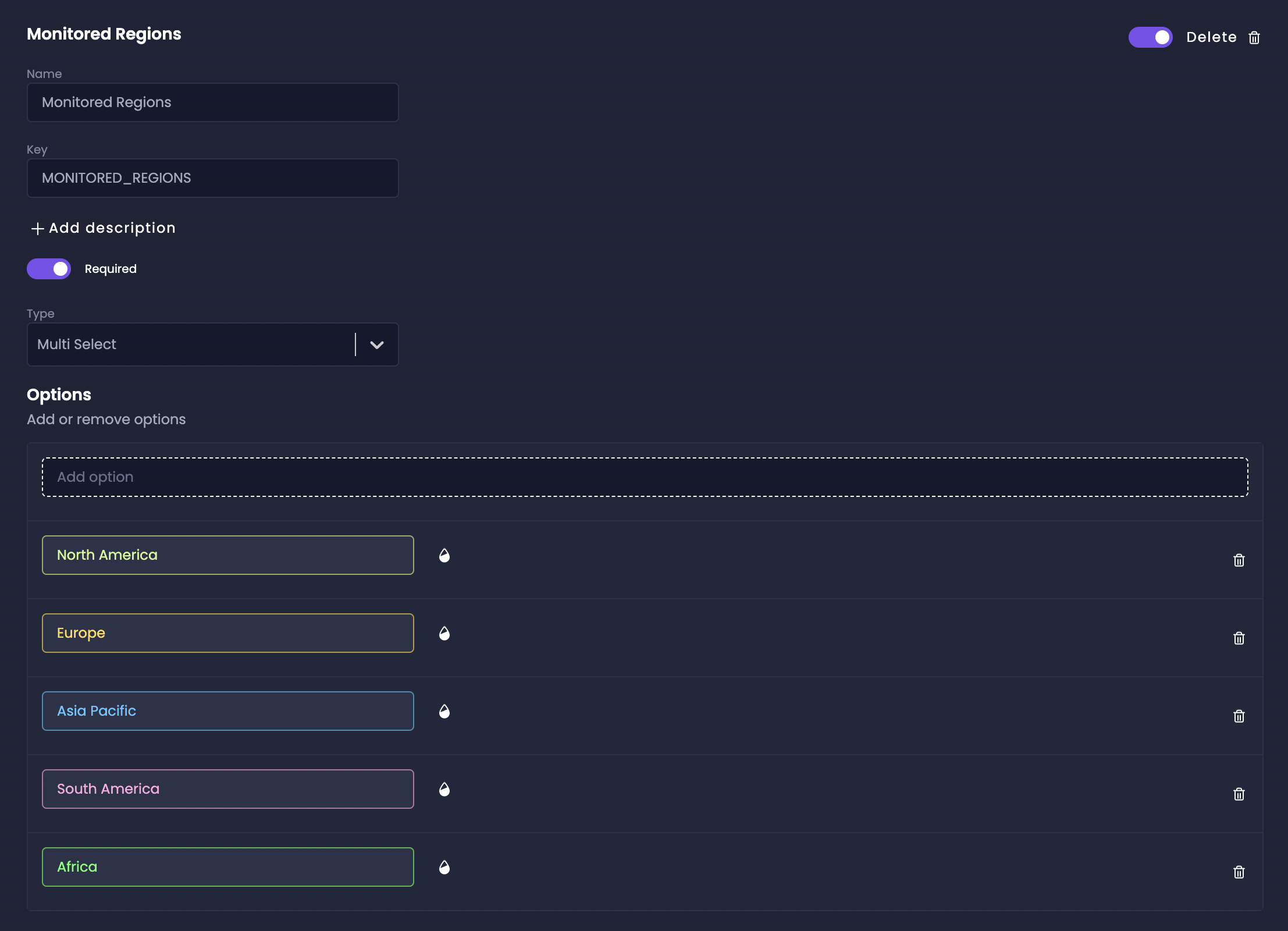

CRON Schedule
Define and validate the CRON expressions for scheduled jobs.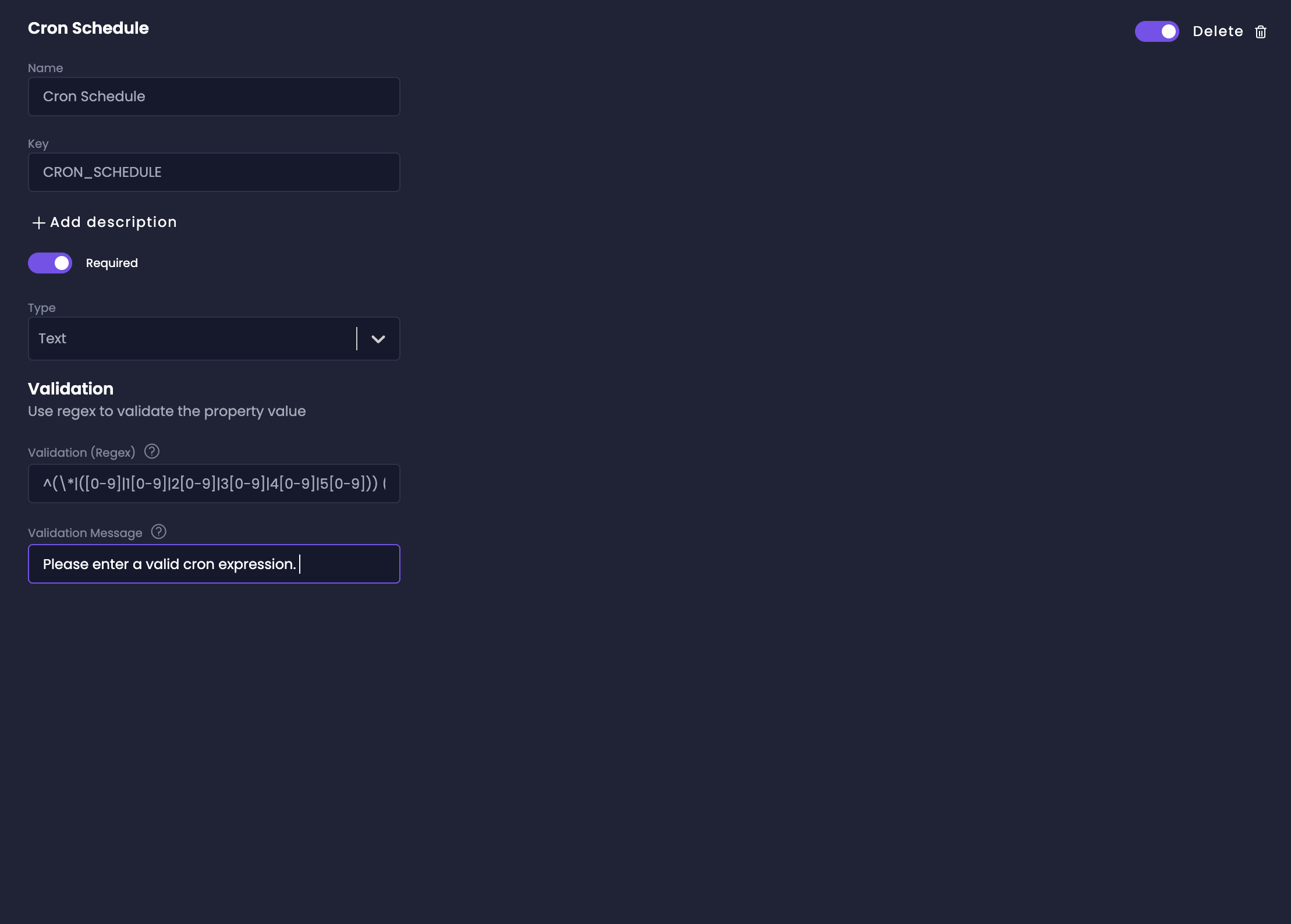

Documentation Link
Define and validate a link to a specific documentation site.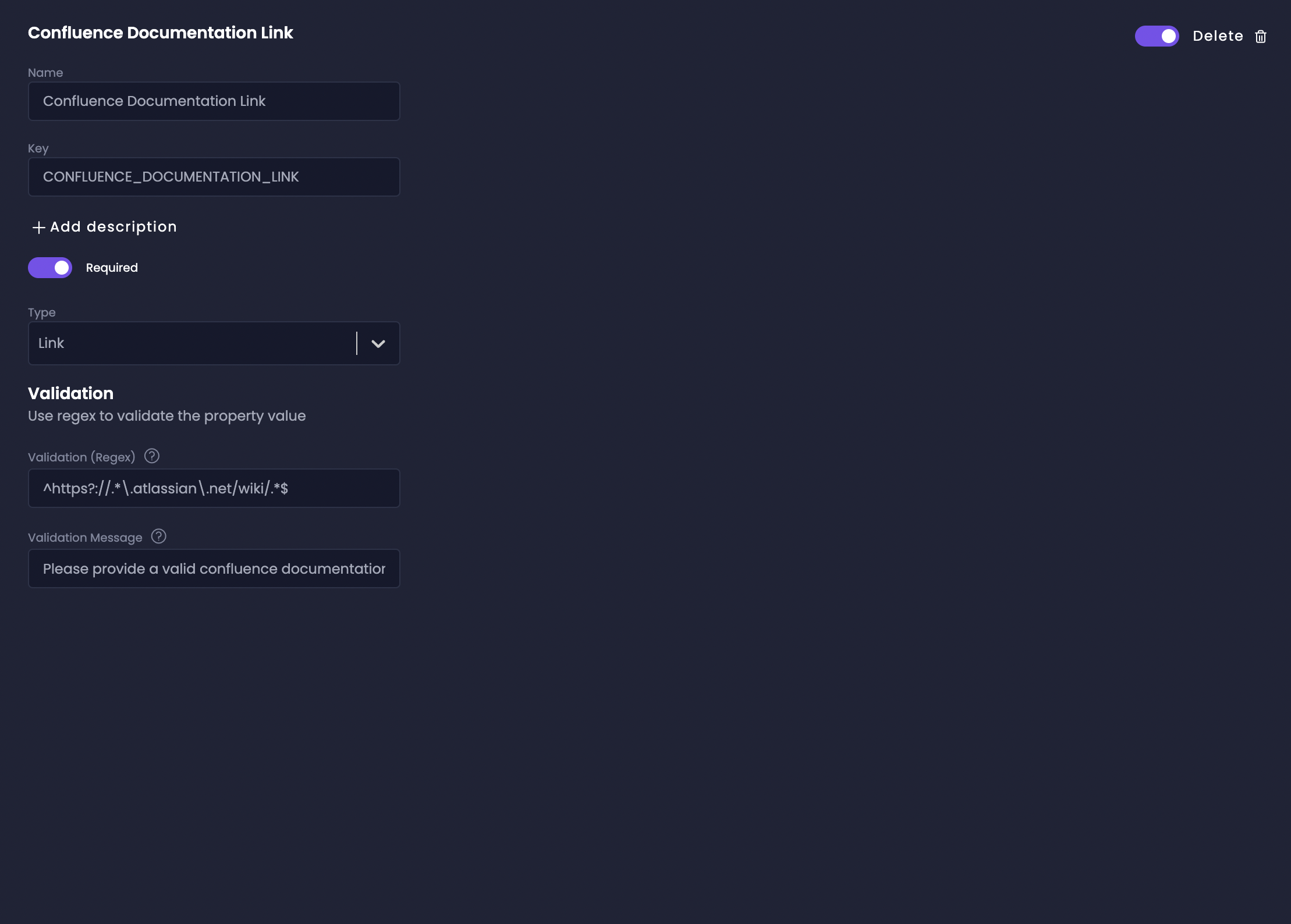

Access & Manage Catalog Properties
You can manage all your Catalog Properties from a single interface so that you have one source of truth for your organizational metadata.1
Navigate to Your Amplication Workspace
Access your workspace within the Amplication platform.
2
Select the 'Settings' Tab
Find and select the “Settings” tab in the navigation bar.
3
Navigate to 'Catalog Properties'
In the settings sidebar, locate and click on “Catalog Properties”.
4
Create and Manage Catalog Properties
From this central location, you can create new properties, modify existing ones, and manage their configurations and default values.
Next Steps
Now that you understand how Catalog Properties can optimize your software ecosystem, explore these additional topics to maximize your Amplication adoption:Private Plugins
Dive deeper into how your Amplication plugins can leverage both Catalog & Blueprint Properties for automated code generation.
Architecture Graph
Visualize and manage all your resources and their properties in a dynamic, multi-dimensional view.

